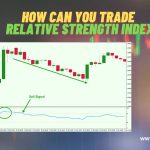Factors That Influence Silver Rate

![]()
Silver belongs to a group of valued commodities includes gold, platinum & palladium by virtue of its designation as “precious metal.” Due to its distinctive qualities and relative scarcity, this lovely white metal has always been in high demand. Although there has always been a demand for silver, the price might change regularly. The ten elements listed below influence fluctuations in Silver rate.
Why Do Silver Rate Change?
It is important to carefully examine a variety of various aspects in order to understand the pricing trends for silver. The analysis of silver pricing is complicated by the way that some of these market phenomena interact with one another. For instance, any market price below those costs indicates less mining and supply when manufacturing costs reach a particular level.
However, higher silver Rate encourage more costly mining and production, which boosts supply.
Price factors that reputable analysts & knowledgeable silver investors consider when deciding whether to purchase or sell silver are summarized here. Each of these aspects, as well as the relationships between them, naturally sparks a lot of inquiry and study. To better comprehend why the market trends up or down, you should be aware of these market movers.
Comprehend both short-term & long price swings, keep in mind that any component may receive particular emphasis at given time. It is crucial to take all of them into account in context.
10 Elements that Influence Silver Rate
Supply and Demand, First
Silver’s supply is constrained but demand is steady, which is one of the reasons the metal is so expensive.Fundamental economic truth of markets, however, is that any perceived or real change in supply or demand will affect prices, frequently in ways that are disproportionate to the change itself. For instance, silver prices might briefly increase if a strike stops mining at a significant producer. Similar to how news of a new application for silver, like solar panels, can spur purchasing and push prices higher.
Silver Waste
Due to its sensitivity to light, silver was once used in photography in enormous quantities. There is less need as non-silver photography has dominated the industry. Similar to photographic film, there has been a sizable stockpile that has been recycled for its silver content.
In addition, when prices rise, more silver coins, jewellery, and other products will be sold and melted down, increasing the amount of silver available on the market.
It is important to note that according to studies by the Silver Institute, at the current silver pricing for the commodity, most of the easily available inventories of silver and scrap have been used up.
Technology
Silver prices are affected both directly and indirectly by both old and new technologies, as seen with the development of film technology. Many of these innovative uses for silver make use of its unique physical properties, which practically render it irreplaceable.
The reality that modern technology is actually assisting in the replacement of silver in more commonplace applications runs counter to that. For instance, some inexpensive mirrors can be replaced with new types of aluminum alloys. The same is true for households that frequently use stainless steel flatware rather than the more conventional silverware.
Though technology is typically a net optimistic driver for silver demand and pricing, new needs from solar photovoltaic systems and several green applications are what really drive these trends.

Economic Trends at Home and Abroad
Along with gold, silver is regarded as a secure investment. In times of economic instability, silver is thought to hold its value & purchasing power better than paper money & some other assets. Prices for silver and other precious metals typically face strong upward pressure when and if those economic worries materialize into major crises.
Flip side of this coin is that robust, expanding economy can result in less demand for silver from investors. Vibrant economy will increase demand for silver in jewellery and industrial uses, it doesn’t produce dividend or interest revenue.
Inflation
The majority of analysts, economists, and investors are aware of how inflation sneaks up on portfolio value. Even nominal inflation that has accumulated over a long time is included in this. On the other hand, historically speaking, silver has been viewed as a fantastic hedge against that inflation. Paper money will lose value due to inflation, but silver can safeguard against such declines in purchasing power.
Dollar’s Strength
U.S. dollar, which is currently the most used currency in world.Typically has an inverse relationship with the price of silver. Participants in the silver market are aware that a strong dollar has historically put pressure on the price of silver. At the same time, many investors keep an eye out for times when the dollar is strong so they may buy at deep discounts & average down their holdings.
Price of Gold
There is long-standing correlation between the prices of gold & silver. Even if the true relevance of the gold-silver ratio is hotly contested. In general, silver prices will rise or fall in tandem with the price of gold. Expert’s base their trading decisions on GSR, buying or selling. When silver is expensive or inexpensive in comparison to the current price of gold.
Rates of Interest
Level of interest rates briefly mentioned above, is a sign of the state of the market as a whole. Investors will choose interest payments above long-term appreciation of their silver assets.The reason is silver investments are not meant to generate a present return. As a result, just like the value of dollar market prices of silver typically have an inverse relationship with the level of interest rates.

Visit us : www.milliva.com





